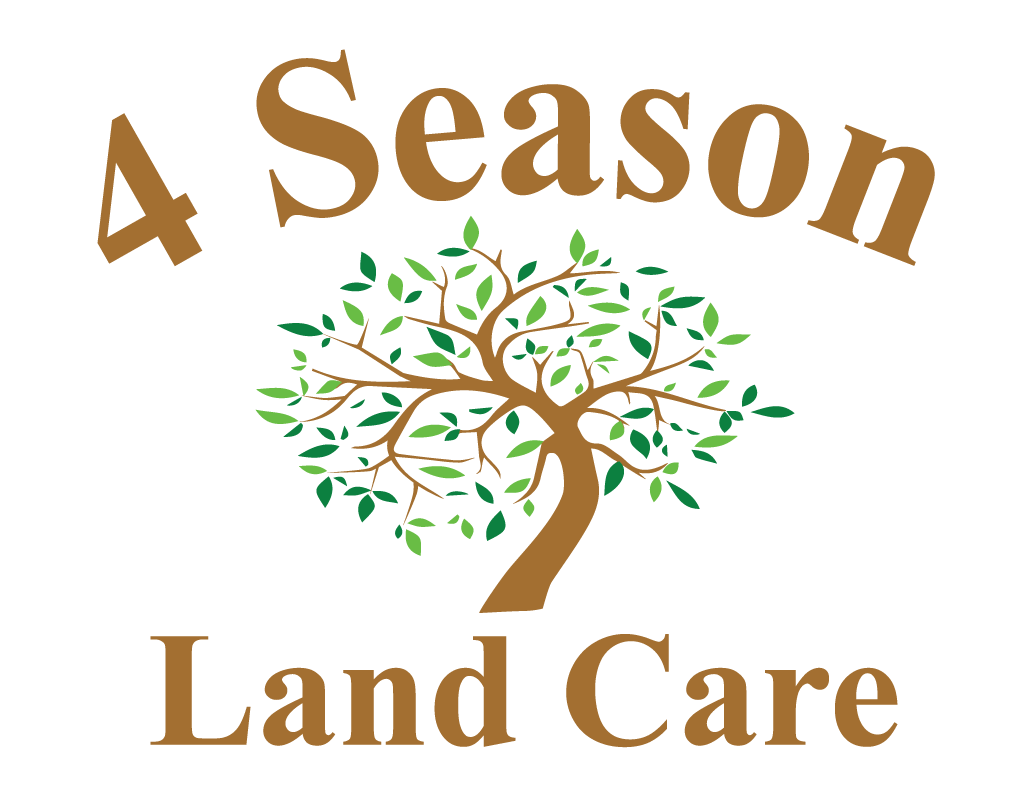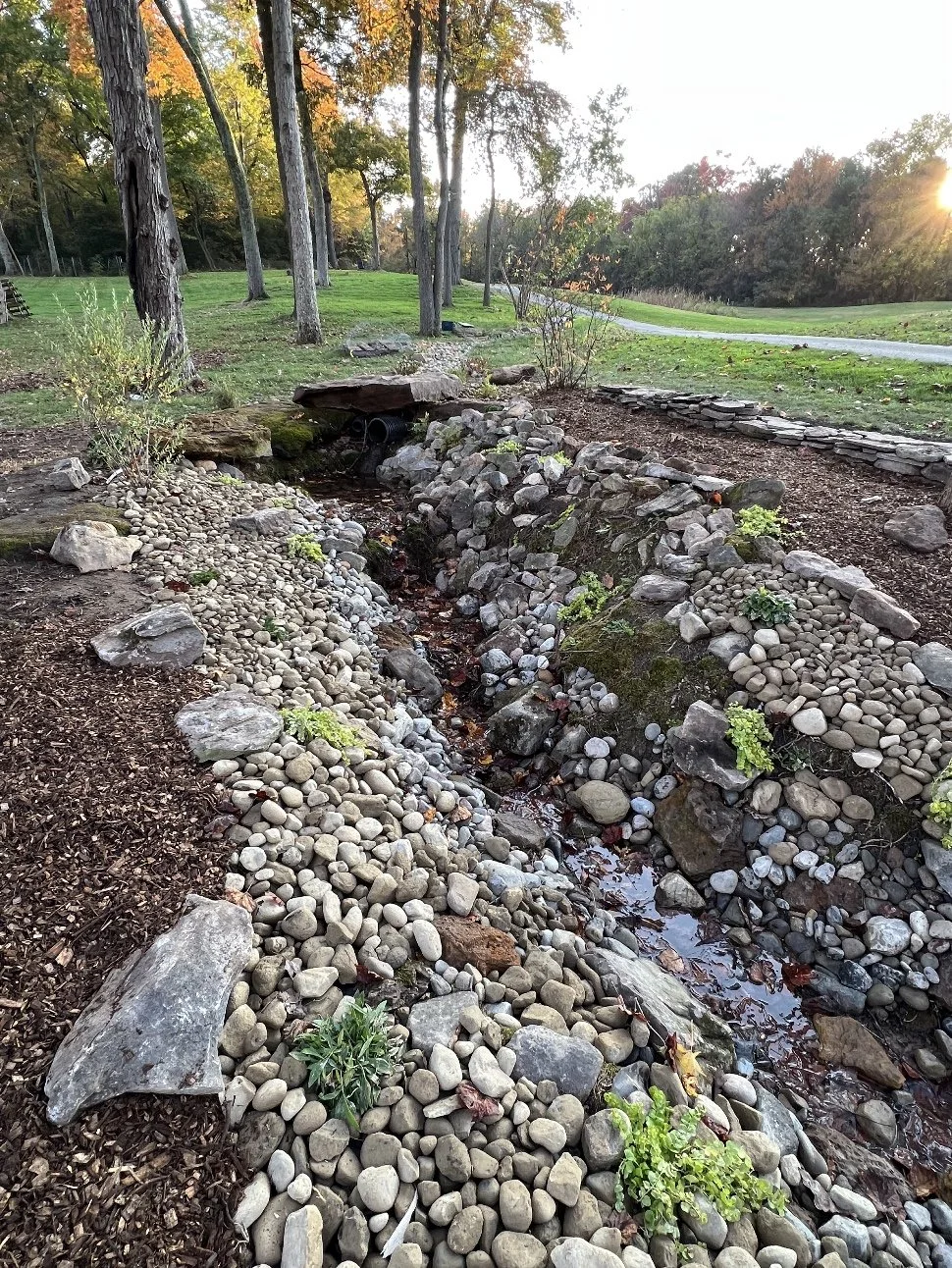As we strive to create a more sustainable world, rain gardens have become increasingly essential. Their ability to manage stormwater, support biodiversity, conserve water, improve air quality, and enhance the beauty of our surroundings makes them the perfect addition to any landscape. By implementing rain gardens in our communities and homes, we can contribute to a healthier, greener future.
Lawn and Garden Care Tips for Falling Temps
Eco-Friendly Landscaping: How To Conserve Water And Keep A Beautiful Yard
Guest post by Clara Beaufort
These days, making sure your household is eco-friendly is super important. Doing our part to keep the planet healthy and combat global warming means a better future for our children, but it can be difficult to know where to start. Many people begin with the inside of their home, replacing light bulbs with energy-efficient ones, installing smart thermostats and appliances, and being more conscious about wasting energy. For many people, however, being eco-friendly means starting outside, and taking care of your lawn is a big part of that.
Lawn care can be a big drain on resources such as water and electricity, so it’s important to do what you can to “go green”, so to speak. With eco-friendly landscaping, you can have the gorgeous lawn you’ve always wanted without sacrificing much energy, and it can even save you money each month on your utility bills.
Keep reading to find out more about how to create eco-friendly landscaping.
Keep wildlife in mind
Good green landscaping will nurture the wildlife in your area while also not being a drain on resources, so look for ways you can use or reuse items to create a lovely backyard paradise for the animals who live in your community. This can be something as simple as planting shrubs for bees to seek shelter in, or planting a small garden that will act as a base for birds, bees, rabbits, and other small animals to feed and rest. Many of these creatures have no one to look out for them, so creating a safe habitat will allow them to grow and thrive in peace. Consider using a rain barrel or birdbath to help gather water for the animals so you don’t have to provide it.
Be mindful of water conservation
If you live in an area where drought is an issue, it’s especially important to be mindful of your water consumption, especially during warmer months. Consider a landscape which doesn’t require much irrigation. These are called xeriscapes, and are used primarily to cut down on the need for water by utilizing careful plotting of plants and trees. It’s important to make sure you have the right plants for this type of scape, so do some research before getting started. Click here for more details.
Use salvaged materials
When it comes to lawn decoration, it’s best to use salvaged or repurposed materials, such as glass, rubber, and old stone. You may be able to find many of these items around your own home, or ask friends and family to save them for you as they use their own. Reusing articles in a different way can help you create a personalized, creative landscape that doesn’t take a toll on the environment.
Say no to that sprinkler system
Sprinklers are handy to have for busy families, but they can create quite a bit of water runoff onto concrete areas--which can lead to damage over time--and can be a huge drain on resources. Once your lawn’s soil captures all the water it can hold, anything else is just waste. Instead of relying on a sprinkler, water your lawn by hand, or invest in a timer that will shut off the system after a few minutes.
Creating an eco-friendly lawn or garden can be a big job, so it’s best to do some research beforehand and make sure you’re prepared before getting started. Look online for the best ways to take care of your landscape according to the area of the country you live in, and talk to the experts at your local lawn and garden store for assistance.
Photo via Pixabay by Counselling
Safety Audit For Your Backyard
Tips For A Healthy, Beautiful Lawn
The saying "the grass is always green on the other side" is never more true than this time of year. Do you find yourself driving through the neighborhood wondering how in the world your neighbor has managed to keep their lawn so green and lush even in this heat? You aren't alone. We seldom speak to a homeowner who doesn't want a greener, healthier looking lawn.
Most people assume it is too much work to bother with and ultimately give up. We are here to tell you that is not necessarily true. It is possible to have a beautiful, healthy yard without spending every second of every day taking care of it.
Use A Sharp Blade.
A sharp blade will cut rather than tear the lawn. Maintaining your lawn mower and sharpening the blades could mean the difference between yellow, damaged grass and a beautiful green lawn. Cutting as opposed to tearing means your grass will need less water and nutrients to maintain the beautiful green lushness you are looking for.
Adjust Your Mower's Cutting Height.
Adjusting the high of your mower blades is dependent on the weather. In the early spring you may cut it at one and a half inches. During the hottest part of the year raise it to 2 inches and only lower it again when temperatures begin to drop for the summer.
Soak It
Instead of watering a little every day consider soaking your lawn three to four times a week. Soaking the lawn allows your lawn to develop deeper roots. The deeper the roots the less you have to water.
Try this cool trick from The Family Handyman: "to find out how much water your sprinkler delivers, set out a cake pan, turn on your sprinkler, then time how long it takes for the water to reach a depth of 1 in."
Time It Right
Whenever possible water your lawn first thing in the morning. The cooler morning temperatures mean you will lose less water to evaporation. Also, it will have the rest of the day to dry, helping you avoid mold and fungal diseases that occur with constantly wet lawns.
Leave The Clippings
Leaving the clippings will allow moisture to be trapped better and help avoid total evaporation
Aerate
Oxygen is just as important as water and nutrients. Aerate your lawn every fall to allow oxygen to get to the roots.
If you have any questions or need any help maintaining your lawn visit our website or call us at 443-794-8138
June Gardening Tips
Is was a mild spring with more rain than normal. What does that mean for your garden? Your grass is probably healthier than ever, your plants are fuller than ever and your flower beds have fewer weeds right now. As June comes in we can expect some of this to change,but there are ways to keep everything looking as beautiful as it does right now.
1. Keep your lawn and garden hydrated - Don't over hydrate but keep to a set schedule and make sure your lawn and garden stay hydrated as the temperatures rise. You will need to cut your grass but keeping it longer will allow it to stay green and healthy throughout the month.
2. Divide overcrowded plants - Now that your garden has bloomed you can get a better feel for what needs to be divided. If you still have too many plants and cannot transplant them in your own yard consider sharing them with neighbors.
3. Fertilize azaleas and rhododendrons - June is the perfect time to fertilize your azaleas and rhododendrons. Also keep a close eye on insect damage. If you have not pruned these bushes yet, there is still time but don't wait too long.
4. Deadhead flowers to encourage more blooms - With school coming to a close this is a great daily task for the children. It gives them a sense of purpose and helps them to love the garden as much as you do.
5. Start planning for the fall - It may seem early but this is the perfect time to plan where you will be planting bulbs for the fall.
Looking for more gardening tips? Follow our blog and look for new posts each week.
Many of us enjoy time in the garden. But nobody wants to be tied to it. If you need help this summer, call us and schedule service while you are on vacation or simply too busy to be puttering around in the garden.








